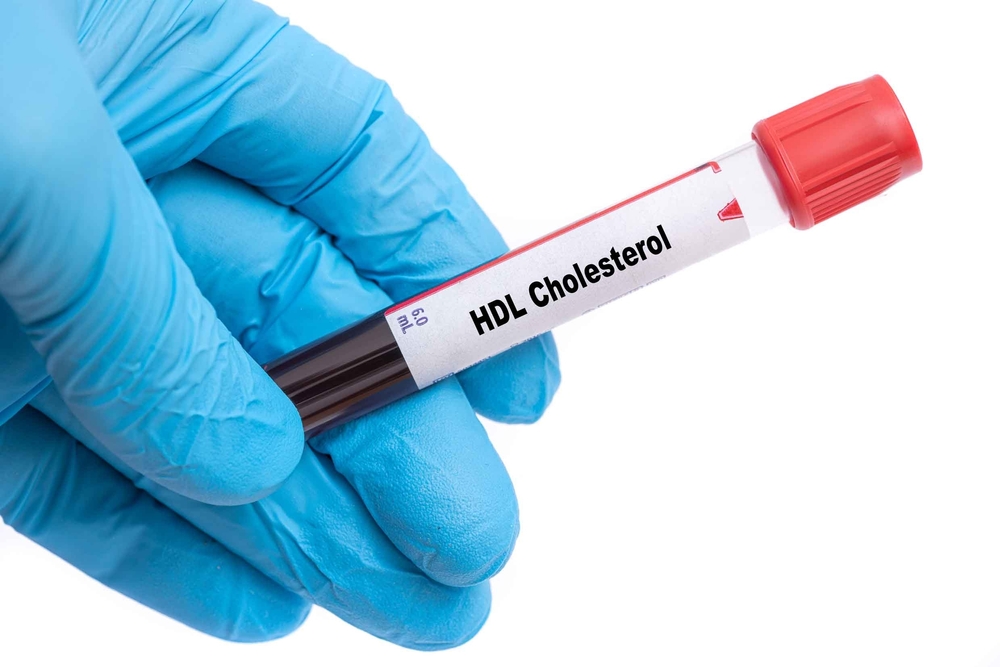Hypercholesterolemia vs. Hyperlipidemia: Understanding the Differences
Published June 30, 2022.

While these two conditions do have some overlap, they are quite different.
Hyperlipidemia is an umbrella term that covers acquired or genetic disorders that result in a high level of lipids (fats, cholesterol, and triglycerides) circulating in the blood. It is usually chronic, and the blood lipid levels need to be controlled by statin medication.
Hypercholesterolemia, also called high cholesterol, is a type of hyperlipidemia where high levels of high-density lipoproteins (HDL, or "good") cholesterol and low-density lipoprotein (LDL, or "bad") cholesterol are found in the blood, usually sticking to arteries like plaque. The latter is particularly dangerous, meaning that people with this condition have a higher risk for a stroke or heart attack.
Causes of Hypercholesterolemia
Unhealthy Lifestyle
Certain unhealthy lifestyle choices can cause high cholesterol and triglyceride levels. These include inactivity, obesity, smoking, high alcohol consumption, and poor diet. Saturated and trans fats (found in animal meat, full-fat dairy, and processed foods), in particular, contribute to increased levels of bad cholesterol.
Familial Hypercholesterolemia
Genetics plays an important role in the body's ability to rid itself of excess bad cholesterol. If it runs in the family—if your parent or sibling developed cardiovascular diseases at a young age (under 55 years for men or under 65 years for women)—you may inherit hypercholesterolemia. Familial hypercholesterolemia is fairly common, occurring in every 1 of 250 people.
In this case, living a healthy lifestyle may not be enough to lower the risks of heart attack and stroke significantly, and medication may be required. However, to a large extent, you can still decrease levels of bad cholesterol by avoiding the habits listed above, even if you have familial hypercholesterolemia.
Age
Older individuals usually have a heightened risk of developing hypercholesterolemia.
Symptoms of Hypercholesterolemia
Hypercholesterolemia will usually trigger a number of other conditions, the symptoms of which may be identified by the following symptoms:
Coronary Artery Disease
- Nausea
- Chest pain
- Extreme fatigue
- Shortness of breath
- Pain in the jaw, neck, upper abdomen, or back
Stroke
- Confusion
- Blurred, blackened, or double vision
- Sudden loss of balance and coordination
- Sudden dizziness
- Facial asymmetry (drooping eyelid and mouth on one side)
- Inability to move, particularly affecting just one side of your body
- Sudden severe headache
- Numbness in your face, arm, or leg, especially on one side of your body
Heart Attack
- Dizziness
- Tightness, squeezing, fullness, pain, or aching in your chest or arms
- Difficulty breathing
- Anxiety or a feeling of impending doom
- Nausea, indigestion, or heartburn
- Excessive fatigue
Peripheral Arterial Disease (PAD)—Early Symptoms
- Fatigue
- Aches
- Cramping
- Intermittent claudication (pain in your legs during activity)
- Discomfort in your legs and feet
- Increased risk of heart attack, stroke, and limb amputations
Causes of Hyperlipidemia
With its name covering several disorders that create extra lipids (fats) in your blood, there are also many causes of hyperlipidemia. However, it is most commonly caused by a sedentary lifestyle, high-fat diets, obesity, and diabetes. Other causes include:
- Hypothyroidism
- Obesity
- Not eating a nutritious diet
- Drinking large amounts of alcohol
- Diabetes mellitus
- Smoking
- Having a family history of high cholesterol
- Primary biliary cirrhosis
- Chronic kidney disease
- Using certain drugs
Symptoms of Hyperlipidemia
There are often no obvious symptoms, except for sudden events such as stroke or heart attack. High blood pressure is one of the few early symptoms that are easy to detect.
Inherited (also known as hereditary or familial) hyperlipidemia can cause fatty growths around the eyes or joints—usually hands, elbows, or knees.
Relationship Between Hypercholesterolemia and Hyperlipidemia
Hyperlipidemia is an umbrella term under which hypercholesterolemia falls.
Importantly, in many cases of hyperlipidemia, changes to lifestyle are enough to improve the problem. In hypercholesterolemia, there are instances where this is not sufficient, and medications must be used to treat the condition. This is most commonly the case in familial hypercholesterolemia.
It should also be noted that both of these conditions usually present with little to no symptoms unless they are detected through blood work.
How to Manage Hypercholesterolemia and Hyperlipidemia
They can both be managed in the following ways:
Through Lifestyle Changes
- Make sure to include at least 30 minutes of exercise five times a week
- Eat a healthy diet including lots of vegetables, fruit, beans, and whole grains
- Avoid saturated and trans fats
- Don't smoke
- Don't consume large amounts of alcohol
Through Medication
Medication types (or classes) that can assist in the decrease of bad cholesterol to improve circulation and heart health include the following:
- Diuretics
- Beta-blockers
- ACE inhibitors
- Angiotensin II receptor blockers
- Calcium channel blockers
- Alpha-blockers
- Alpha-2 Receptor agonists
- Combined alpha and beta-blockers
- Central agonists
- Peripheral adrenergic inhibitors
- Vasodilators
If you're looking to improve your heart and blood health, be sure to check out our Cholestrin and Bloodsyl supplements.
If you are concerned you may have either of these conditions, talk to your doctor and get your blood pressure checked on a regular basis.







